Hospitality Contract
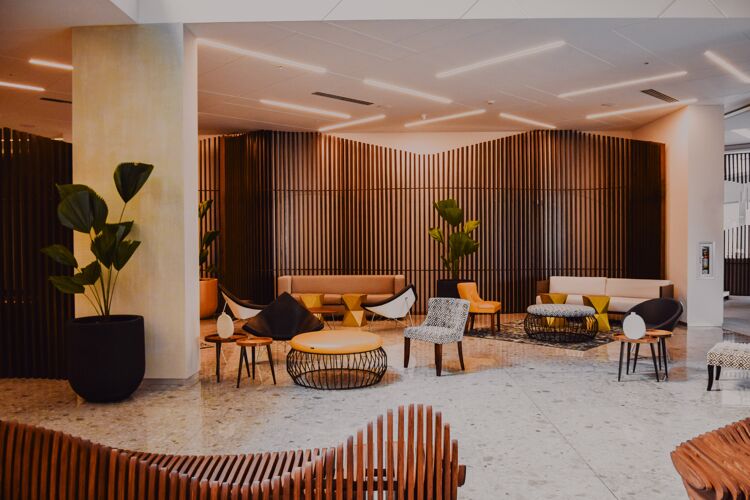
Digital technologies continue to democratise the hospitality sector where corporate branding and lifestyle aesthetic remain a strong and accelerating trend.
As a sector previously dependent on printed stock, customisation is already firmly established for architects, product specifiers and interior design practitioners working within this sector. New product applications and creative print effects continue to make substantial progress adding value and market growth for the design and interior community, with commercial opportunities now witnessed across the space.
Digitally printed surface effects, across multiple applications and technologies are now commonplace within hospitality and contract décor and are available on-demand at all volumes and scales. Bespoke production in low volumes has encouraged market growth and convergence within the print sector. Established Print mills have onboarded technology to fulfil the need for short print runs, whilst new and existing print houses have also expanded to service this marketplace.
The sector is highly regulated, products must adhere to fire retardancy regulations as well as durability, light resistance, and martindale and abrasion testing. To complicate matters, these vary from country to continent.
Digital technologies have made an impressive impact in this sector by enabling interior designer to create customised schemes for hotels, restaurants, bars and commercial spaces.
Environmental materials are also making an impact as the industry meets new regulatory reforms for products and their classification. It’s an exciting space, and one that offers the printing industry new territories and commercial opportunities.
In recent Printeriors exhibits we have showcased many applications, materials and technologies, many of which cross industry sectors:
Printing applications utilised include Roll to Roll, Dye Sublimation, Transfer Printing, Flatbed UV and Latex and others. Inks sets span Dye Sublimation, Latex, Pigment, UV and Reactive Inks across many applications and materials. Some examples of which are featured below:
The image below features many of the components used in a contract interior. Printed flooring supplied by Media co showcases how large spaces can be branded to match a corporate scheme, equally the drapes and wallcoverings both printed using HP technology, the Stitch, using dye sublimation for textiles and Latex inks for wallcoverings, both offer exceptional durability and lightfastness properties.
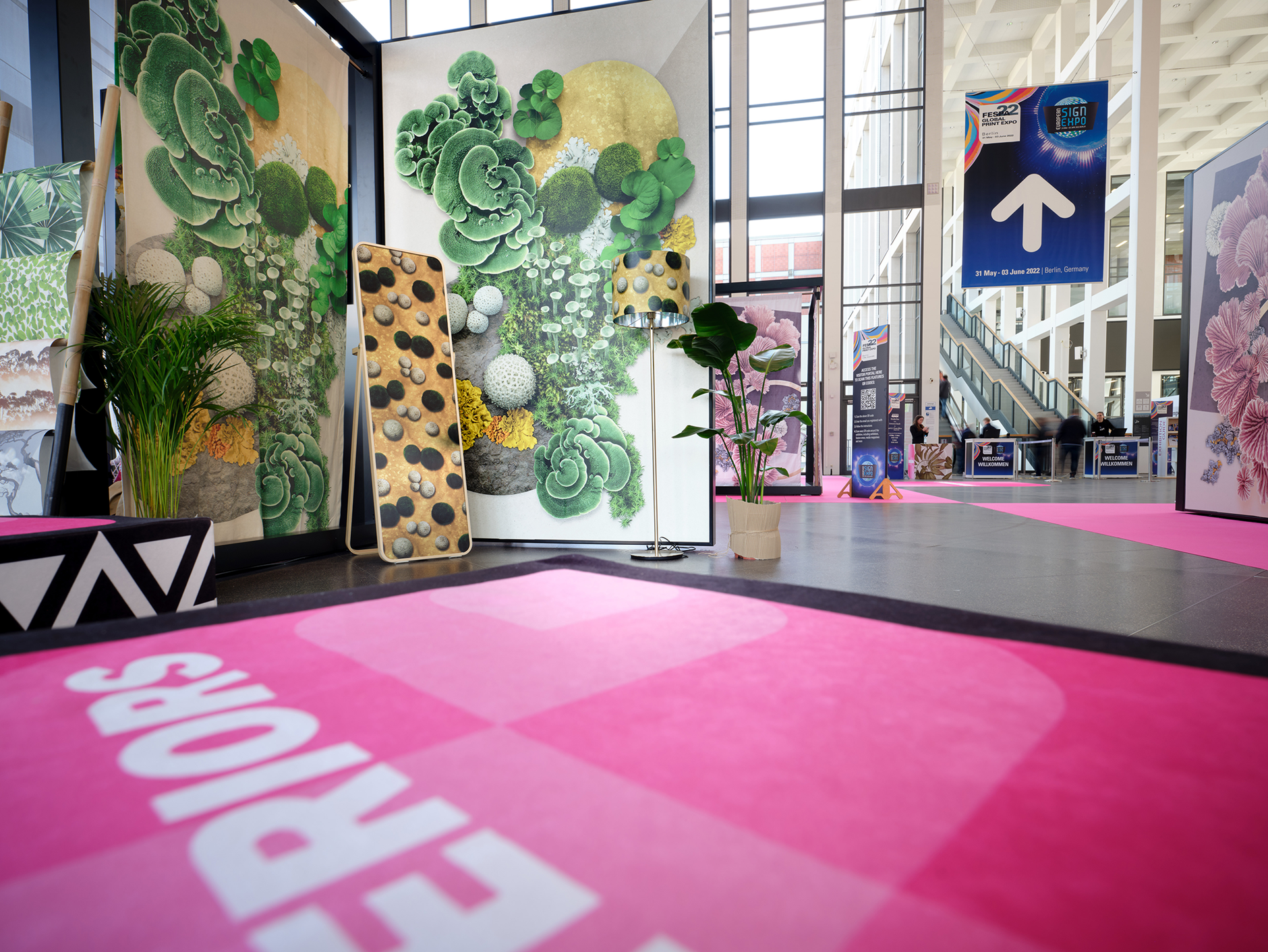
The image below showcases neon inks using Nyla 4 technology from SwissQprint. With any number of possibilities, the exhibits showcase both the use of UV inks for wallcoverings and their use to build 3D texture on the surface of the chosen material. Applications in this sector are continually evolving as the inks and machinery become increasingly adaptive.
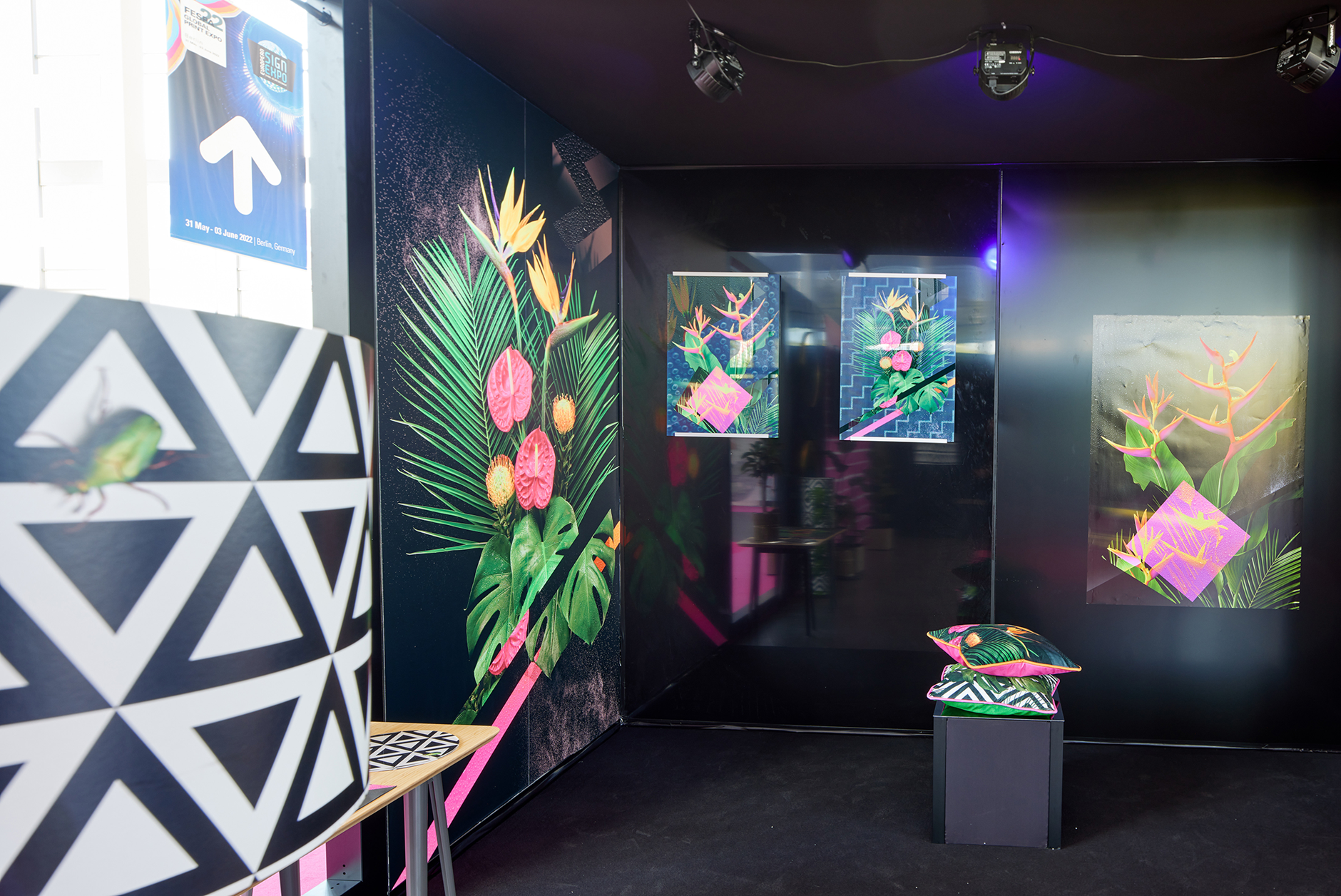
The cover image featured in this article has been taken by Ralph (Ravi) Kayden from Unsplash.
Topics
Recent news

The Growth of Digitally Printed Wallcoverings: Key Trends and Opportunities for Personalisation
The digitally printed wallpaper market is experiencing rapid growth, projected to reach $12.25 billion by 2030, driven by demand for personalisation and sustainable options. Advances in inkjet technology enable vibrant, custom designs for residential and commercial spaces. Key trends include bespoke decor, eco-friendly materials, data-driven design, and industry collaborations, presenting significant opportunities for design and print professionals.
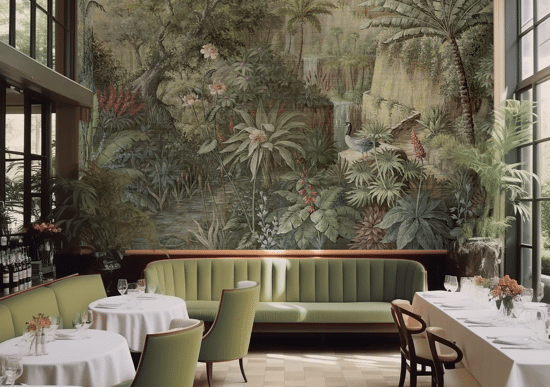
Industry Insights, Design Trends and Disruptive Innovations for Interior Decoration
Debbie McKeegan shares key trends and innovations in the interior decoration industry taking place and demonstrated at recent European exhibitions in Germany and France. The interior decoration industry is adapting to challenges like overstock and supply chain disruptions by integrating digital and traditional methods, aiming for more agile and environmentally friendly solutions.

Bridging Design and Technology: The Story of Western Sensibility an interview with Kathryn Sanders
In this podcast episode, Debbie McKeegan interviews Kathryn Sanders, the CEO & founder of Western Sensibility, a US based company that merges interior design with digital printing technology. They discuss the origins of the business, its innovative services, and the importance of sustainability in the textile industry.
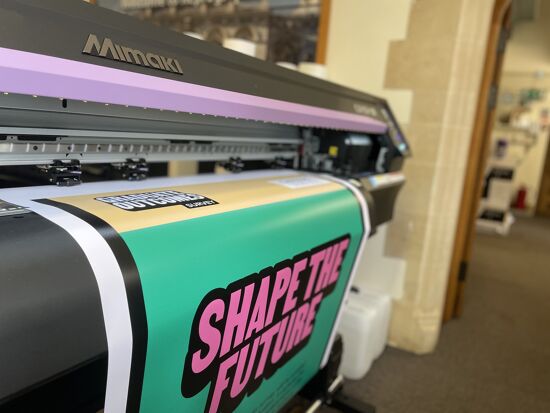
How to choose the right machine for indoor print
With interior print one of the stand-out growth areas of the industry in recent years, it is crucial printing companies select the right equipment to achieve the best quality results. Here, Rob Fletcher picks out some of the machines best suited to this work.